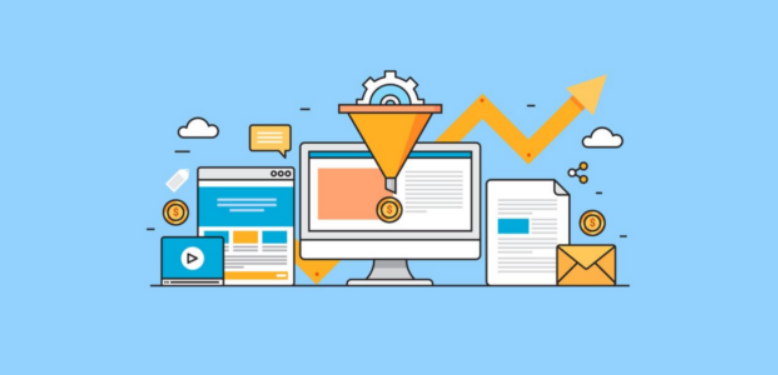The key to managing a successful online business is by maximizing the rate of which impressions convert into organic sales. The average website only yields a 0.15 - 0.25 conversion rate. However, with these tips on how to increase your conversion rate, it’s not unlikely to see up to 2% increase in sales.
Here are a list of things you can do to start improving your conversion rates today.

Timed Call To Actions
Implementing carefully timed call to actions can increase your website conversion rate by up to 3%. In some industries, this can have an even greater increase up to 9%. Proper integration of these timed popups allows visitors to see your website, and obtain the information they were looking for by visiting your website. After a set amount of time, the call to acton will appear. While this technique is an invaluable resource, overuse can quickly do the opposite and begin turning away potential customers from your site.
To get the best results, you should make sure the call to action appears roughly at the same time as the user has finished reading the information they visited your website for. This is the best time to perform the popup, and will minimize users frustration while using your website. When you trigger the call to action while they are still reading, they will quickly close it and go back to what they are doing. Make sure you are optimizing the conversion rate of your popup. When the user has finished reading your website content, or pricing, that is the perfect time to trigger it - they will be more willing to read your call to action, and take action.
You can A/B test for the best time to trigger the call to action, or just choose a reasonable timeframe based on the nature of your website. You can often times look at the average time on the website of your visitors, to determine the best time. As an alternative, you can trigger the call to action once 65% (as example) of the page has been scrolled.
You should also work to reduce the intrusion level by making them easy to close. Remember that some users will always close pop ups regardless of what the offers are. The goal to minimize the impact to regular user experiences especially when they are potential buyers. Finally, you should make sure your timed call to action used a cookie, so it does not trigger for every page load - something that would cause your website visitors to leave very quickly.
Keep Your Forms Simple
A common way to loose your online sale is by using long drawn out forms with too many fields to fill out, or that demand difficult to obtain information. The best idea is to get only the right amount of information you need to finalize the purchase, or only when it becomes required. When possible, make sure that your lead generation forms are autofilled to save the user time, if you have customer information. If you are asking potential customers to subscribe to your new product, you can autofill their information and just ask them to confirm the purchase.
Keep things as simple as possible. An effective form is direct, easy to understand, and able to gather the most amount of user information using the lowest number of fields possible. You should hide fields that do not apply to all users, until the users becomes eligible by meeting conditions set by other inputs. If you are asking users how they found out about your website, the "Please Describe" field should only appear if the user selects "Other".
For forms and applications that cannot reduce the amount of information collected, you can reduce your drop off rates by implementing different steps into your form. The first step might be basic contact information, followed by order information on the second step. On the third step, the user could finalise and complete the form. You can increase conversion rates by turning your intimidatingly long forms into three or more digestable steps for the users.
Collect and Share Reviews or Ratings
Product reviews are the bread and butter to any business and are an important tool for building customer confidence, and can even boost your SEO by allowing Google to display rich snippets for your website, and display the rating directly within search results. This lets your products or service be found by users sorting their search results by the highest ratings . That goes to say, having good reviews and ratings is more effective than having none or bad ones. Afterall, a search engine won’t direct its customers to low rated services. Make sure that your business is producing happy customers, with great customer support available to help prevent customer frustration. This will help you to mitigate any bad reviews.
By displaying reviews and feedback from other customers, your lead can understand how your product will work for them and can increase the rate of conversion of your website. Careful positioning of these reviews or ratings - such as during the checkout process - can make a huge difference. By providing users with a transparent look at what it is they are about to buy, you can increase the chance of a conversion, whether that is making an online purchase or providing their email for a newsletter subscription. Websites using a trusted review or rating platform can see up to 400% increase in sales over their competitors that don't.
Keep It Simple
There is nothing worse than reaching the landing page of a website only to be completely lost in the clutter.
If a user is visiting your site in search of a specific product or you are designing a landing page for specific search results, make sure your visitors are able to find what they are looking for easily. Overwhelming the user with unnecessary information is a quick way to lose interest, and cause them to hit the back button.
When possible, try to minimize the unnecessary content on your landing pages while still balancing your SEO efforts. Stick with Headings/subheadings, features, ratings/reviews, and visuals to highlight your product pages. Visually pleasing aesthetics is also important in passing on relevant information in an easy to digest manner.
Providing detailed information has a purpose and a place. You can include this information and offer users the ability to quickly jump to specific pieces of information as they traverse your landing page. Even at this stage make sure that your call to actions remain visible, and allowing them to take action once they have the answers they were looking for: a good example of this is a "buy now" button that scrolls with the user.
Use a Heat Map Click Tracker
Use a heat map or click tracking tool to see where users are hovering, and which specific areas of the web page they are spending time on. This is a helpful way to know whether users are skipping over your call to actions, or missing critical information. There are infinite amounts of information to gain from reviews your website heat maps.
When you see the specific areas of the pages that users are spending time on, you can determine whether that information is helpful to a sale or not. Otherwise, that area of your page is likely prime real estate for a call to action. Make sure that there is a quick way to convert from these areas where users are spending time.
Click tracking will also help you determine where your visitor drop off points are. If they reach a long form, or a huge wall of text you might see visitors abandoning your website. With click tracking, you see see all of the less obvious areas of your landing page or website that causes users to leave. Work to understand why visitors are dropping off at that point, and then use this information to make educated changes to your landing page.
Add oAuth Third Party Signups
Let your visitors login using accounts they already have with Facebook, Google or other platforms. This allows them to access your website securely with just one click - no registration required. oAuth has been eliminating traditional sign up forms and become increasingly popular with websites over the past couple years. Using third party services like Facebook or Google are now a common way in which users can register or access their account on your website.
Since this falls into simplifying your website and getting rid of unnecessary forms where possible, we will provide a reminder of the importance of making the user experience as simple as possible right off the bat. The less users are burdened with your site requirements the more patience they will have to go through with any product purchases later on!
Use Personal Call to Actions
Everyday CTA’s like “register here” or “sign up now” are not great motivators for having users participate in the features and offers for your website. Taking advantage of phrases that include “Yes” or “free” are buzzwords that entice the user in traditional sales and psychology. If people think they are getting a deal or getting something for free they will be more likely to participate in the promotion or feature.
It is important to customize your website and the way CTAs are laid out. Make sure they are prominent, and available for the visitors to access easily.
Add Live Chat Support to Increase Conversions
Nobody likes talking to robots, but everyone needs someone to talk to is important to consider when increasing your conversion rate. Live support features like live chats are a great way to build confidence in your website and offer customer service support. Live chats are easy to add to your website and they offer a channel where a team member can directly communicate with the client.
There is no harm in trying to reach out to the customer when they are on your site. Afterall, if they don’t want to chat they can always choose to close the window.
Refund, rewards programs and exchange policies
Users will be more inclined to make a purchase if they know they can get their money back if they are not happy with a product. This is a legitimate way to help increase your conversion rate. Sometimes a customer may be on the fence about whether they want to sign up or not so offering the chance for refunds, exchanges and rewards may be the extra push they need.
Rewards are also a good way to increase the likelihood of return business especially if your website offers products that are naturally self-exhausting. If your business is the go to for a product that needs to be replaced after a set amount of time why not offer rewards programs to entice the user to keep coming back.
Start Upselling
Offering an up-sale at the point of purchase does not technically increase your conversion rate but is invaluable for boosting your sales. This holds true especially if the up-sale is related to the initial product. Adding a POP upsell can increase your average order total by up to 18%. With careful planning, or adding a discount at the time of purchase, this technique can be used to increase conversion. If you can sweeten the deal, you can help to seal the deal while obtaining extra revenue from your upsell.
Keep in mind that finding the right combination of upsell features may take a little time. It is worth experimenting to see what works and what doesn’t. You can use historical data from your online store to determine the best combination of items to offer together.
Increasing your conversions is a tricky process that takes lots of time. However, once you get an understand of your audience and start working to narrow down where the opportunities are being lost, you can work to make adjustments to your website.
Our $1 campaigns are perfect for A/B testing your website changes.
We can help to send you 50, 100, or 1000 visitors to help test the changes that you make to your website. Watch as the bounce rates, page views, and average session duration changes as you make educated changes to your website!



